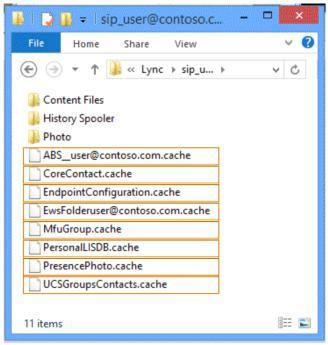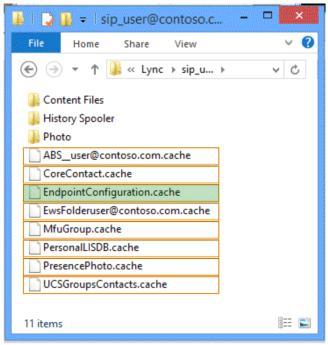[A4] Your company has a Microsoft Office 365 subscription and uses Microsoft Lync Online. After a long network outage, some users reports that they cannot sign in to the Microsoft Lync client and they receive the following error message:
Cannot sign in to Lync. You may have entered your sign-in address, user name, or password incorrectly, or the authentication service may be incompatible with this version of the program. If your sign-in information is correct and the problem persists, please contact your system administrator.
You confirm that other users can sign in successfully.
You need to ensure that all of the users can sign in to Lync Online. Which file should you delete on the users’ client computer?
To answer, select the appropriate file in the answer area.
Hot Area:


Explanation/Reference:
Note: EndPointConfiguration.CacheWhen Lync 2010 connects to a specific front-end server, it caches that endpoint to make the sign in process faster in the future. However, sometimes the endpoint can be changed. This can cause sign- in to fail. To delete the endpoint cache, follow these steps:
Locate the local application data folder:Windows Vista and Windows 7:
%LOCALAPPDATA%MicrosoftCommunicator<">[email protected]> Windows XP: %USERPROFILE%Local SettingsApplication DataMicrosoftCommunicator<"">[email protected]> Delete the file that is named EndpointConfiguration.CACHE. Restart Lync 2010

